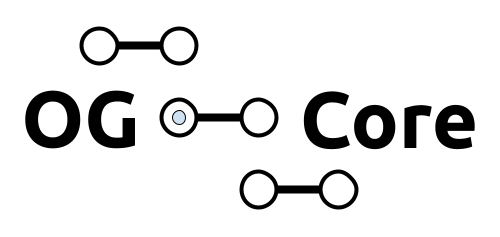Model Overview#
The overlapping generations model is a workhorse of dynamic fiscal analysis. The OG-Core model is dynamic in that households in the model make consumption, savings, and labor supply decisions based on their expectations over their entire lifetime, not just the current period. Because OG-Core is a general equilibrium model, behavioral changes by households and firms can cause macroeconomic variables and prices to adjust. This characteristic has recently become a required component of fiscal policy analysis in the United States.[1]
The main characteristic that differentiates the overlapping generations model from other dynamic general equilibrium models is its realistic modeling of the finite lifetimes of individuals and the cross-sectional age heterogeneity that exists in the economy. One can make a strong case that age heterogeneity and income heterogeneity are two of the main sources of diversity that explain much of the behavior in which we are interested for policy analysis.
OG-Core can be summarized as having the following characteristics.
Households
overlapping generations of finitely lived households
households are forward looking and see to maximize their expected lifetime utility, which is a function of consumption, labor supply, and bequests
households choose consumption of \(i\in\{1,2,...I\}\) different consumption goods, composite consumption, savings, and labor supply every period.
the only uncertainty households face is with respect to their mortality risk
realistic demographics: mortality rates, fertility rates, immigration rates, population growth, and population distribution dynamics
heterogeneous lifetime income groups within each age cohort, calibrated from U.S. tax data
each lifetime income group has its own discount factor \(\beta_j\) following [Carroll et al., 2017]
incorporation of detailed household tax data from specified microsimulation model
calibrated intentional and unintentional bequests by households to surviving generations
Firms
the production side of the economy consists of \(M\) different industries \(m\in\{1,2,...M\}\)
representative perfectly competitive firm in each industry maximizes static profits with general CES production function by choosing private capital and labor demand, taking public capital as given
exogenous productivity growth is labor augmenting technological change
firms face a corporate income tax as well as various depreciation deductions and tax treatments
only output from the \(M\)th industry can be used as investment
Government
government collects tax revenue from households and firms
government distributes transfers to households
government supplies capital to the private firms’ production process
government spends resources on public goods
government can run deficits and surpluses
a stabilization rule (budget closure rule) must be implemented at some point in the time path if government debt is growing at a rate permanently different from GDP.
Aggregate, market clearing, and international
Aggregate model is deterministic (no aggregate shocks)
\(M+2\) markets must clear: capital market, labor market, and \(M\) goods markets
We will update this document as more detail is added to the model. We are currently working on adding stochastic income, aggregate shocks, enhanced demographic transitions, more robust tax function estimation, and a large open economy multi-country version of the model. There is much to do and, as any self-respecting open source project should, we welcome outside contributions.
